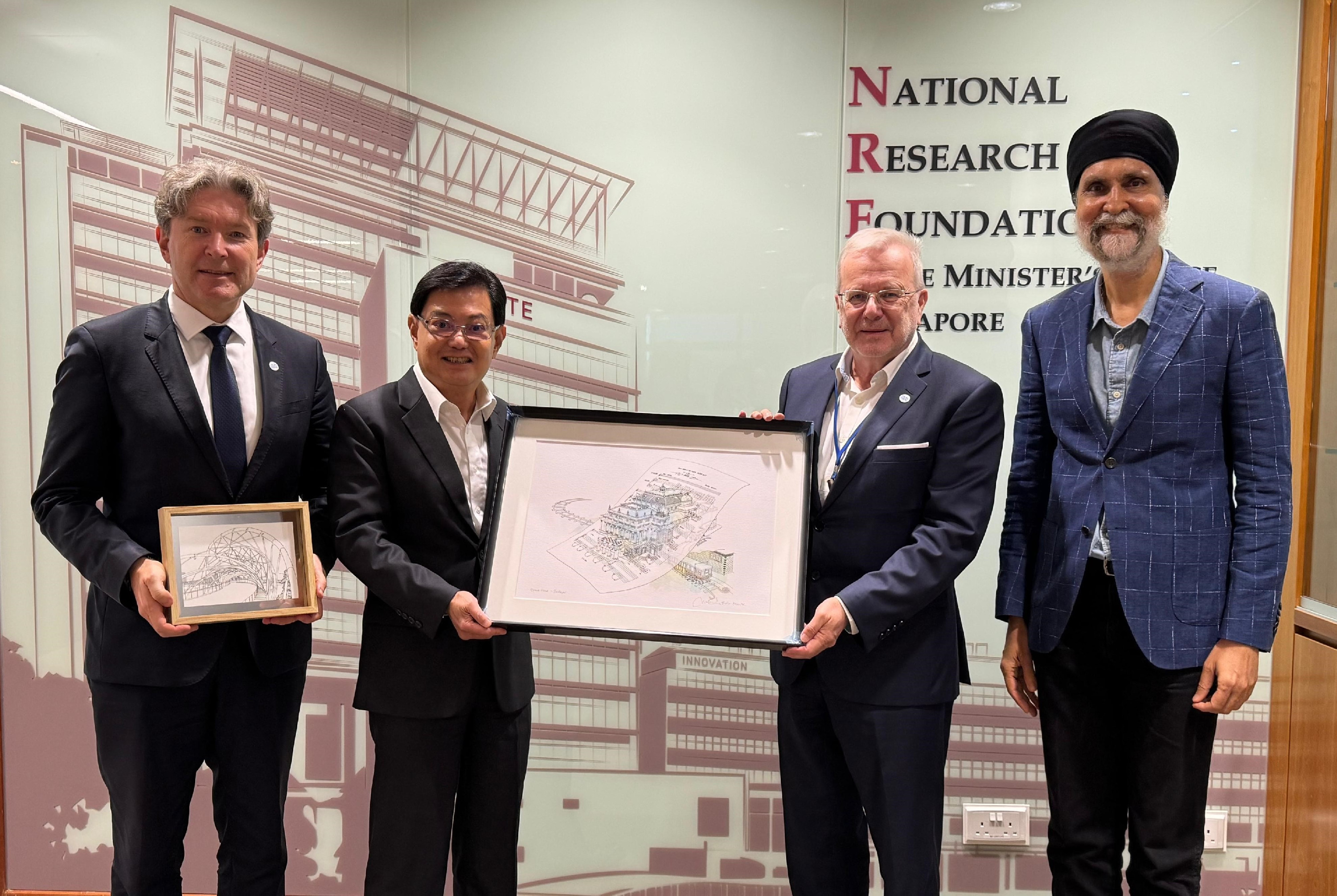AI Symposium 2025 – Highlights from Day One
President opens HUN-REN’s landmark AI event
Artificial intelligence may well become humanity’s most important invention to date—yet it is still far from complete. And it is even further from perfect—so we must get it right, as was emphasised at the HUN-REN AI Symposium 2025 in Budapest. The three-day event brought together some of the world’s leading AI experts to share their latest knowledge and findings with both the Hungarian and international scientific communities.
More than 50 leading researchers have travelled to Budapest for the international event, including several whose scientific work may prove transformative for the future. Over the course of three days, the symposium explores the most pressing questions in artificial intelligence across four main thematic areas: trustworthy and sustainable AI, network science, healthcare, and industrial automation. Running from Thursday to Saturday, the symposium is jointly organised by the HUN-REN Hungarian Research Network and Nanyang Technological University (NTU), Singapore.
The HUN-REN AI Symposium 2025 was officially opened by Tamás Sulyok, President of Hungary at the Várkert Bazár. In his address, the Head of State expressed his conviction that Hungarians will be able to make good use of the opportunities offered by artificial intelligence—and that these will serve the benefit of humanity. He added that while technology alone will never solve our most fundamental problems, it can help make the world a more attractive, sustainable, and secure place.
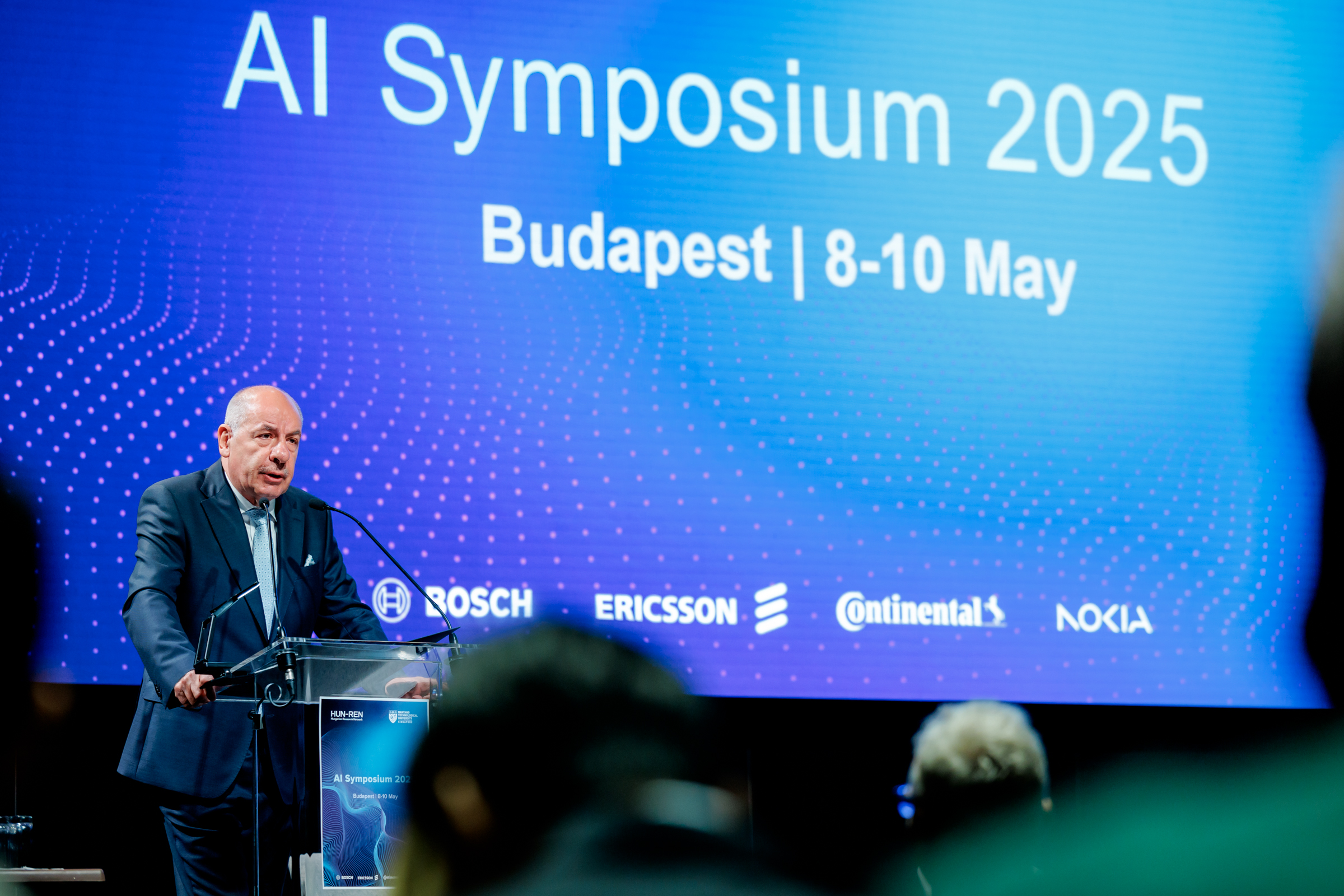
Tamás Sulyok, President of Hungary
Photo: DKP Visual Kft.
In his welcome address, Balázs Gulyás, President of HUN-REN, recalled that Budapest has long been a city of science, innovation, and the pursuit of knowledge, and that Hungary has given the world mathematicians such as John von Neumann, János Kemény, Alfréd Rényi, Pál Erdős, and László Lovász, among others. He described the event as one where “a collective momentum is taking shape,” adding that “at this symposium, the world’s leading minds from across disciplines and continents are shaping the future of artificial intelligence—responsibly, with dedication, and in a sustainable way, for the benefit of humanity.”
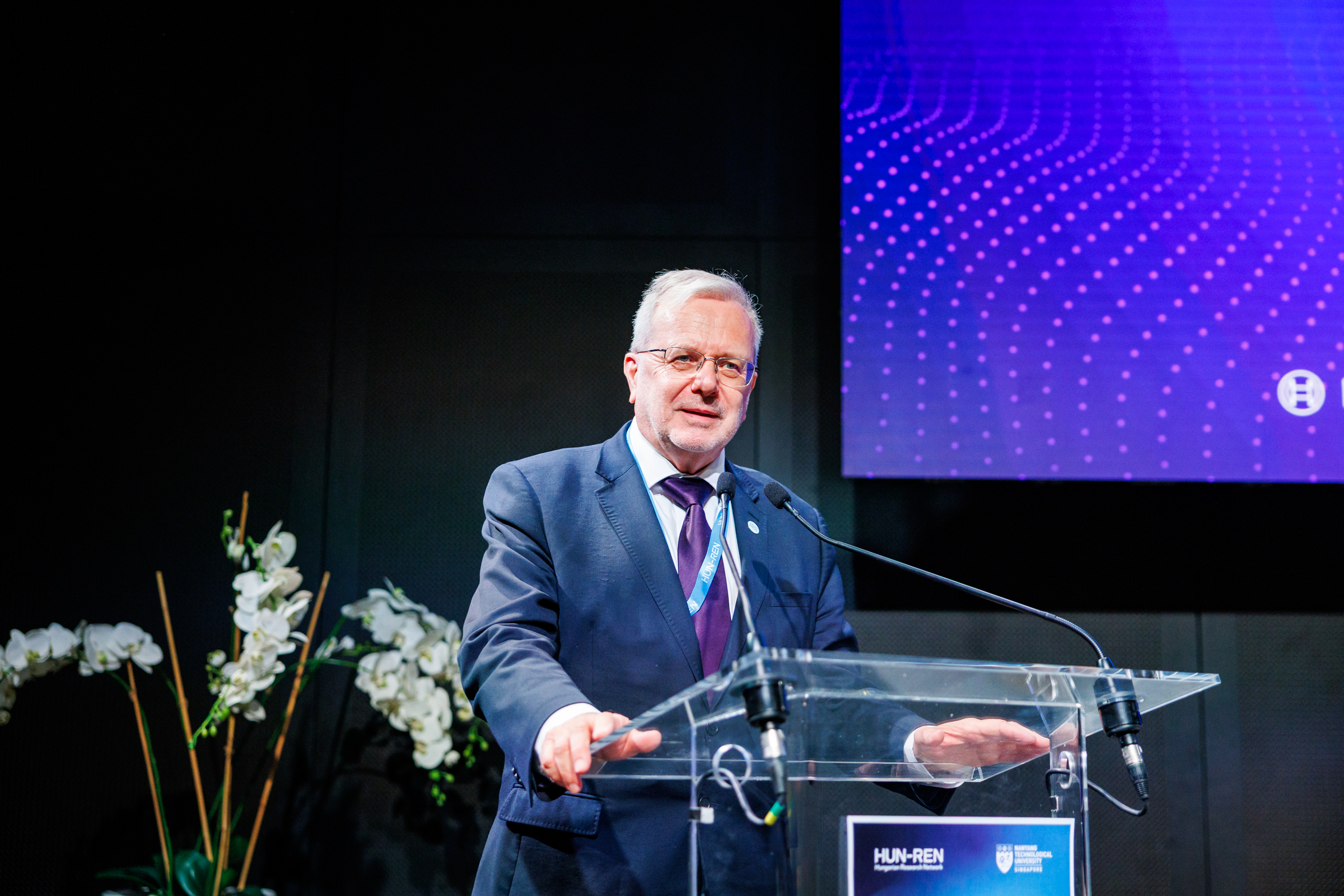
Balázs Gulyás, President of HUN-REN
Photo: DKP Visual Kft.
In his speech, Roland Jakab, CEO of HUN-REN, emphasised that “research and applications in artificial intelligence are unlocking possibilities for humanity that, until recently, existed only in our imagination.” He described this revolutionary technology as a shared interest of all humankind—a common cause—while also stressing the importance of recognising that it is, at the same time, a global race among nations, economies, and societies. Roland Jakab expressed his conviction that HUN-REN is therefore not only contributing to global progress, but also to the local economy, to the living standards of Hungarian people, and, ultimately, to the Hungarian common good.
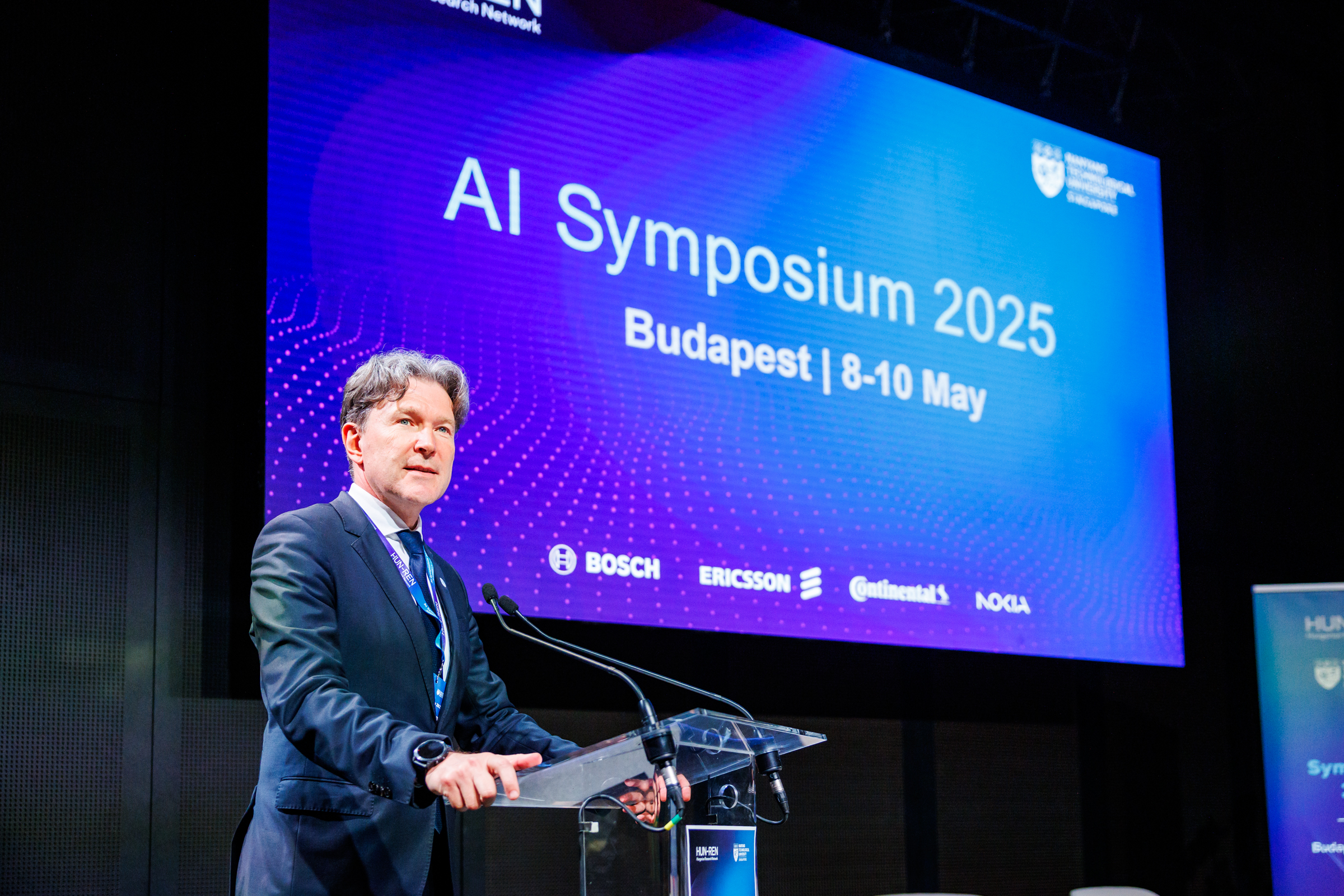
Roland Jakab, CEO of HUN-REN
Photo: DKP Visual Kft.
The CEO added that those who fall behind in the development of AI will inevitably be left behind in the economic competition that will define the coming decades. “It is therefore our responsibility not merely to participate in this global process, but to be key shapers of it.” From a historical perspective, AI may well become humanity’s most important invention to date—yet it is still far from complete, and even further from perfect. That’s why “we must get it right,” Roland Jakab stressed, adding that the evolution of artificial intelligence is being driven by science, while AI itself has also become a driving force for science—accelerating discovery and opening up new possibilities.
At the opening ceremony, László Palkovics, Government Commissioner for Artificial Intelligence, remarked that AI is already having an impact on our everyday lives and on numerous areas of society. He drew attention to the need to revise the legal framework governing artificial intelligence, noting that in today’s AI landscape, the key questions are increasingly legal rather than technological.
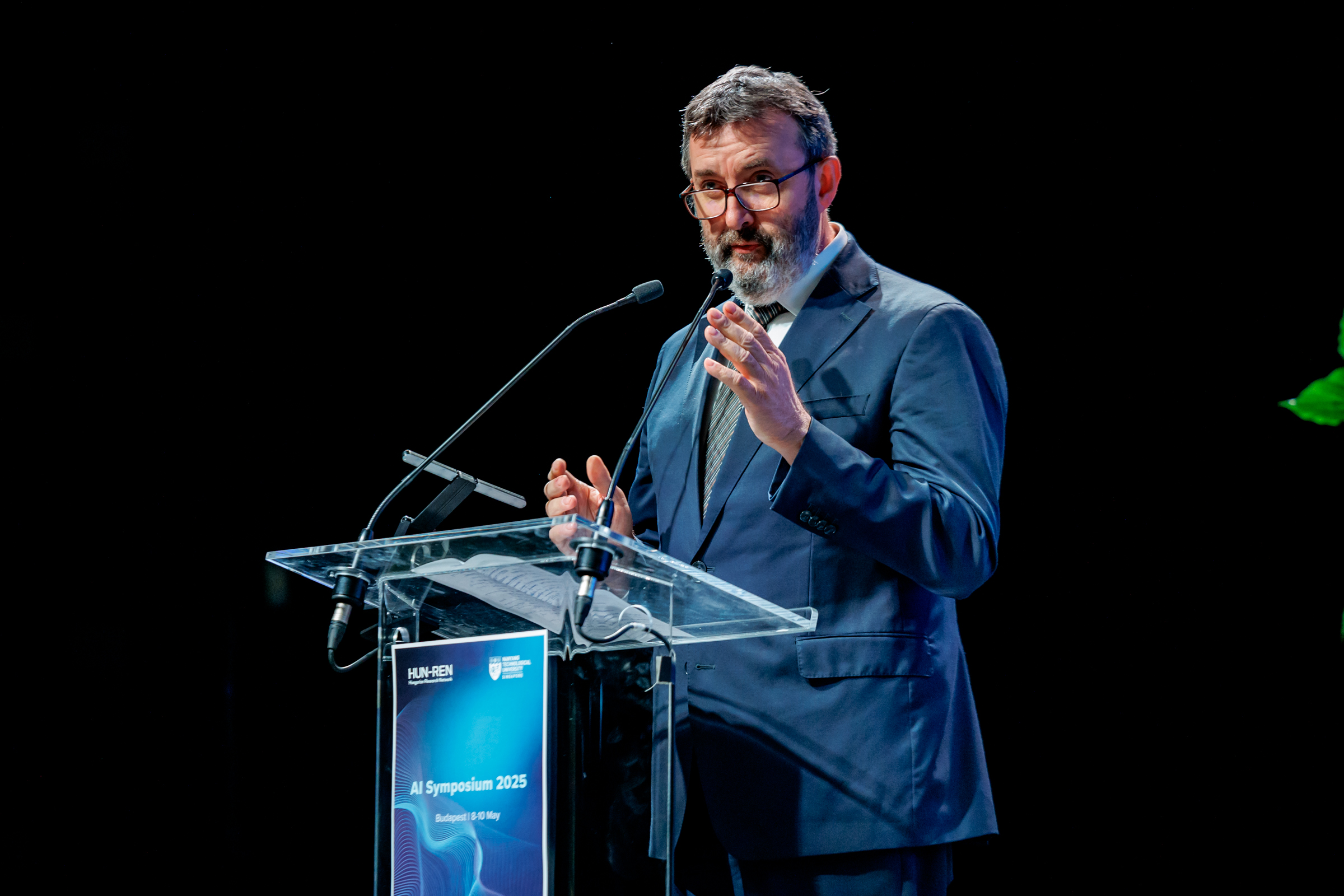
László Palkovics, Government Commissioner for Artificial Intelligence
Photo: DKP Visual Kft.
Professor Luke Ong, a Distinguished University Professor at Nanyang Technological University (NTU), Singapore, emphasised that the aim of the symposium is to foster collaboration between Hungarian and Singaporean researchers in the field of artificial intelligence. His presentation focused on reinforcement learning (RL), with particular attention to the safety of AI systems. He demonstrated how formal methods—such as Linear Temporal Logic (LTL)—can be used to make reinforcement learning safer and more transparent. In his talk, he outlined the theoretical foundations, real-world applications (including robotics, autonomous vehicles, and large language models), and current challenges, such as reward specification failures and decision-making in unknown environments. Professor Ong also underscored the urgency of advancing AI safety, pointing out that artificial intelligence is rapidly approaching human-level capabilities.
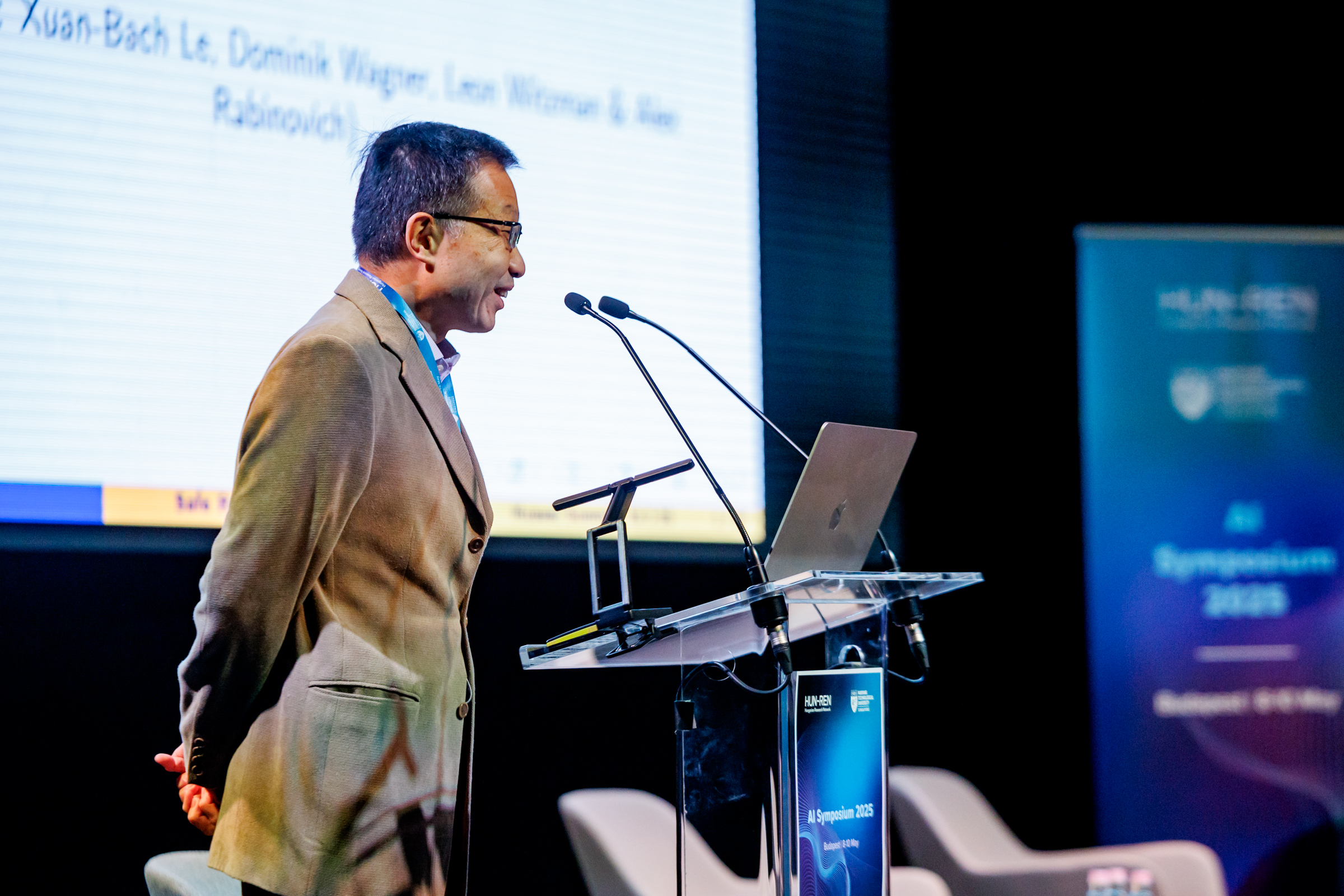
Luke Ong, Distinguished University Professor at Nanyang Technological University (NTU), Singapore
Photo: DKP Visual Kft.
Professor Tao Dacheng, a Distinguished University Professor at NTU Singapore, presented his work on deep model fusion in artificial intelligence—a technique that combines multiple pre-trained AI models to improve performance, reduce training costs, and enable more effective adaptation to new tasks. The Singaporean researcher stressed the importance of developing and deploying AI efficiently, especially in resource-constrained environments. He also highlighted experimental strategies such as task arithmetic and dictionary-based learning, which aim to optimise task-specific model fusion and help bridge the performance gap between this approach and traditional multi-task learning.
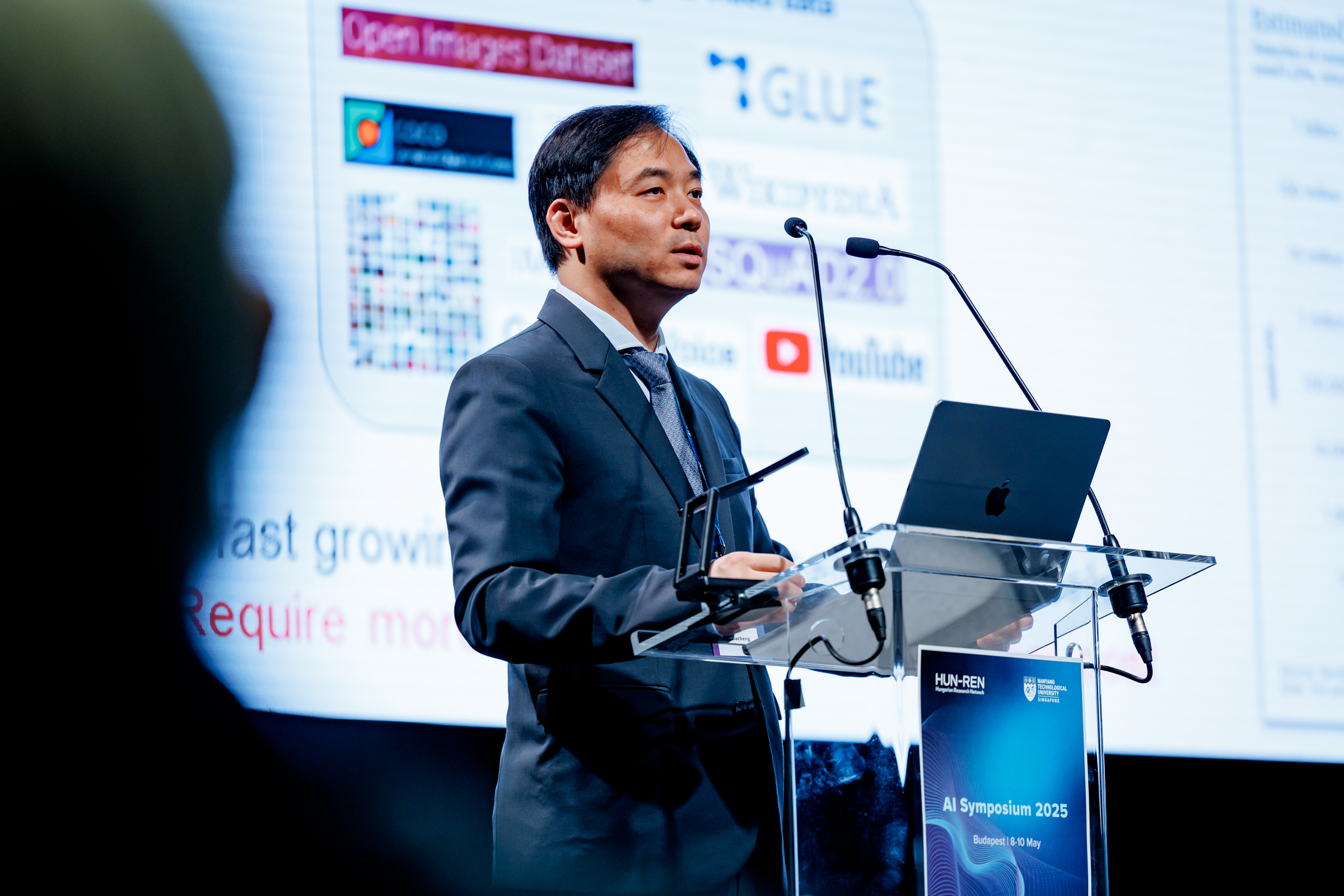
Tao Dacheng, Distinguished University Professor at NTU Singapore
Photo: DKP Visual Kft.
During the breakout sessions, Ira Ktena, a researcher at Google DeepMind, stated that the responsible use of generative artificial intelligence has the potential to fundamentally transform healthcare. “But for this to be truly effective, these systems must be robust, fair, privacy-preserving, and informed by clinical expertise,” she emphasised.
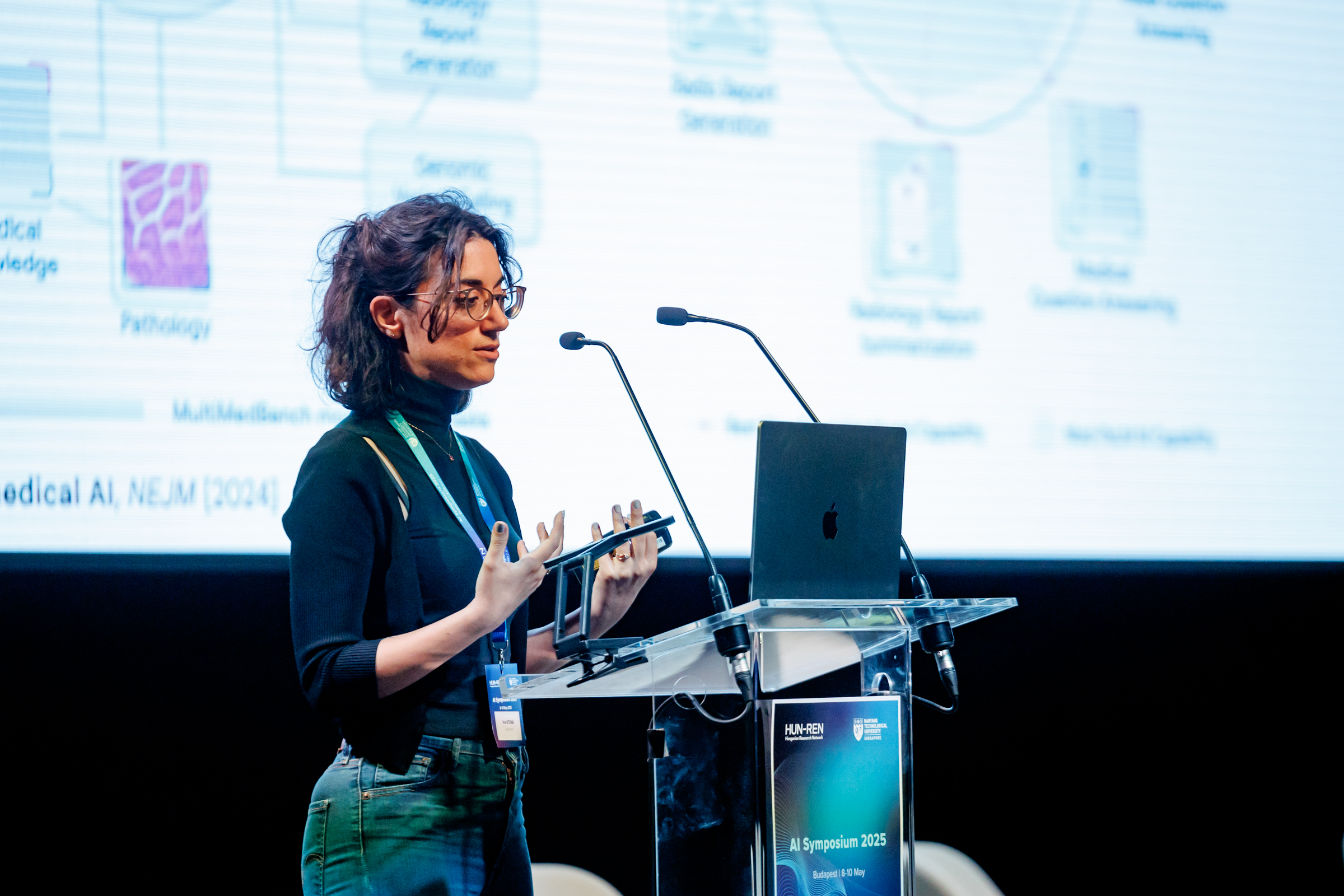
Ira Ktena, a researcher at Google DeepMind
Photo: DKP Visual Kft.
Ferenc Huszár, Professor in the Department of Computer Science and Technology at the University of Cambridge, spoke about the ability of large language models to make intelligent, rational generalisations that are not explicitly present in their training data. According to him, this suggests that their capabilities may go beyond simple pattern recognition and interpolation.
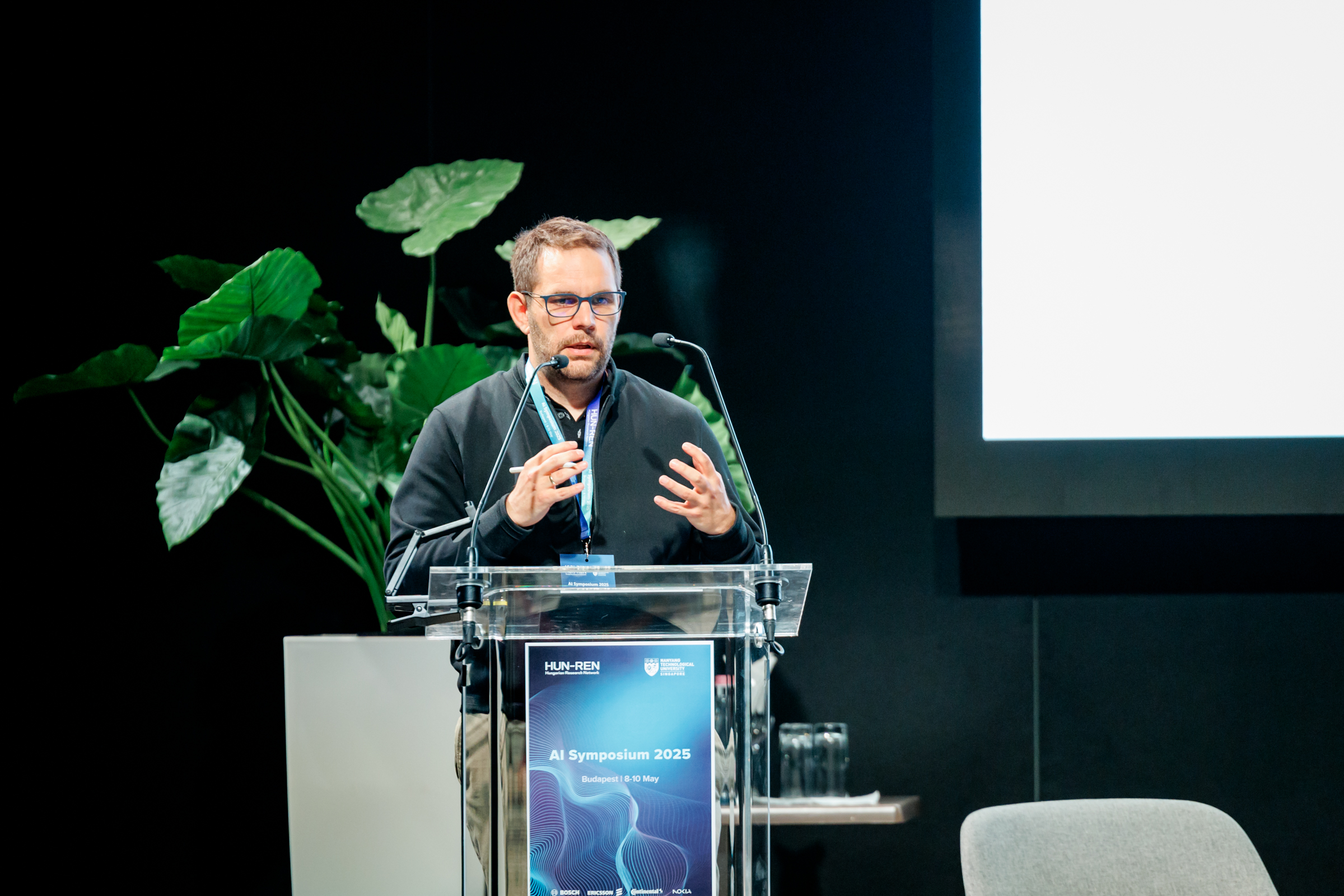
Ferenc Huszár, Professor in the Department of Computer Science and Technology at the University of Cambridge
Photo: DKP Visual Kft.
Bo An, President’s Chair Professor and Head of the Division of Artificial Intelligence at the College of Computing and Data Science, NTU Singapore, discussed how large language models (LLMs) excel at generating text and answering questions—but AI agents are capable of much more. They can pursue goals, use tools, and interact with their environments. According to Professor An, achieving this requires not only an LLM but also planning capabilities, environmental feedback, and tool integration—features that can, for instance, be realised through reinforcement learning (RL). While early RL-based approaches were relatively slow and difficult to generalise, their combination with LLMs has brought significant advances in the effectiveness and applicability of AI agents.

Bo An, President’s Chair Professor and Head of the Division of Artificial Intelligence at the College of Computing and Data Science, NTU Singapore
Photo: DKP Visual Kft.
The final keynote of the day was delivered by Lin Weisi, Associate Dean at NTU Singapore, who spoke about how machines can support human perception of visual and multimedia signals. According to the professor, building intelligent and efficient artificial intelligence requires going beyond raw data processing—we must also model how humans perceive the world, so that machines can operate more naturally and resource-efficiently in human environments.
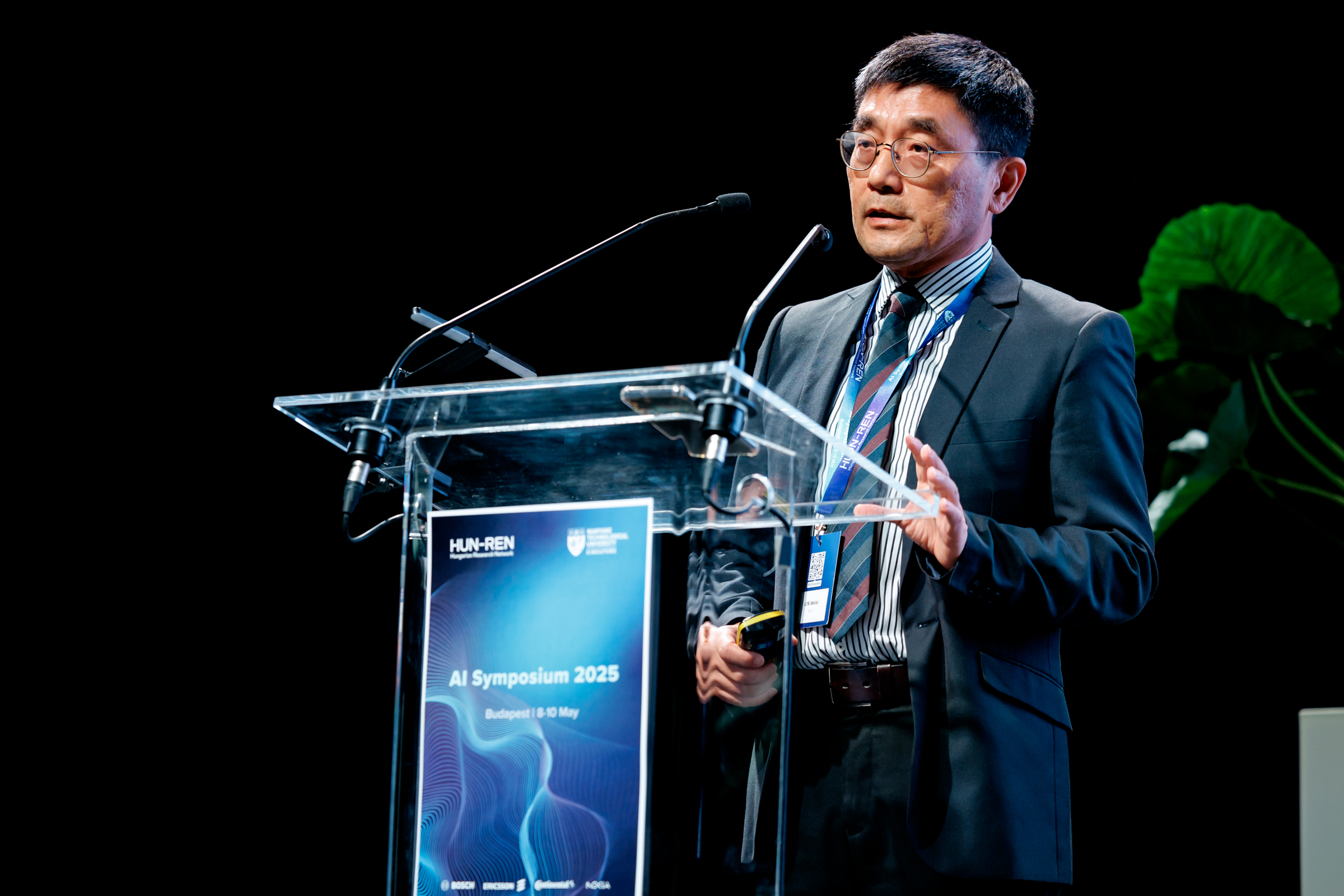
Lin Weisi, Associate Dean at NTU Singapore
Photo: DKP Visual Kft.
Wen Yonggang, President’s Chair of the College of Computing and Data Science at NTU Singapore, spoke about deep learning and noted that artificial intelligence is both a source of environmental burden and a potential tool to reduce it. To build a sustainable digital future, we need to rethink how we develop and use AI systems. “These systems must not only be more efficient, but also environmentally friendly and aligned with global sustainability goals,” the professor emphasised.

Wen Yonggang, President’s Chair of the College of Computing and Data Science at NTU Singapore
Photo: DKP Visual Kft.
An interesting aspect of the parallel sessions was the panel discussion that not only touched on the most current topics in brain research – such as ADHD, schizophrenia, dementia, and AI-based health diagnostic developments – but also had the participating researchers – Miklós Szócska, James Cole, Adrián Csiszárik, and Jagath Chandana Rajapakse – answering questions from the audience. Topics included the application and future of portable MRI devices, as well as the aging processes of the brain. With today's technologies, researchers can already predict what changes can be expected in the brain at a given age based on a single brain image. It is also possible to determine the biological age of the brain with the help of AI, and using large samples, even blood test data, it can be predicted how likely a patient is to develop a chronic disease. Thus, medicine can already predict the risk of developing common diseases such as diabetes before any typical symptoms appear.
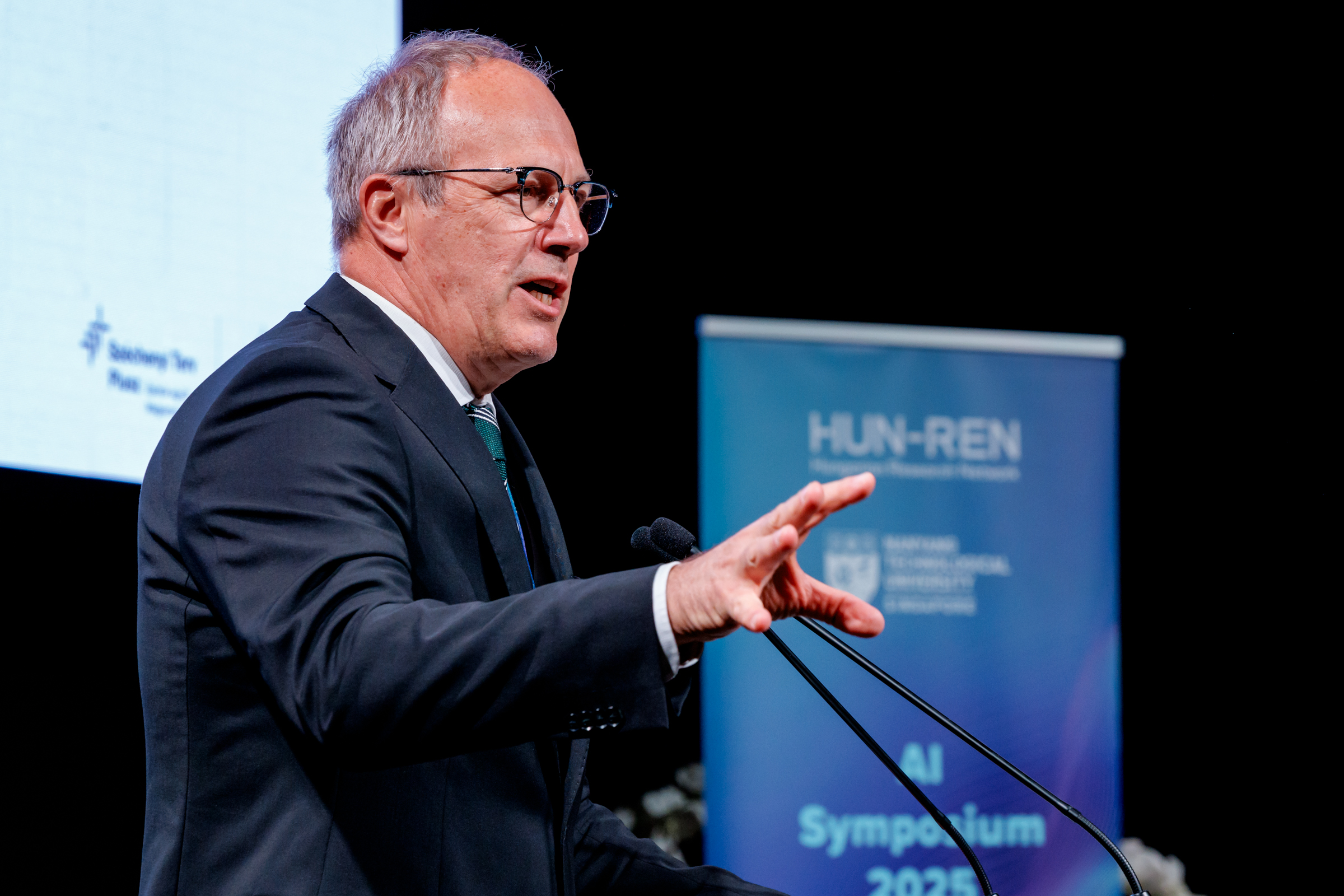
Miklós Szócska, former Minister of State for Health of Hungary, the Director of The Health Services Management Training Centre of the Semmelweis University
Photo: DKP Visual Kft.
Further details on the Friday and Saturday sessions are available here.
